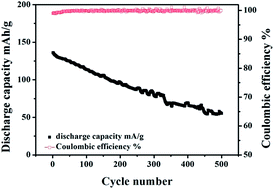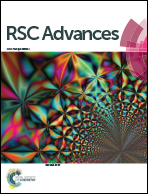Recycled LiCoO2 in spent lithium-ion battery as an oxygen evolution electrocatalyst†
Abstract
Lithium cobalt oxide (LCO) is a common cathode material in lithium ion batteries (LIBs). On the other hand, the recycling of electrode materials in LIBs has attracted serious attention due to environmental, resourcing and energy issues. In order to reduce the cost of the recycling and make full use of the transition metal in the cathode materials in LIBs, herein, we developed a simple method to convert the recycled LCO from spent LIBs into an efficient electrocatalyst for oxygen evolution reaction (OER). The long-time cycling of LCO in a LIB would lead to several structural changes in terms of chemical composition, particle size and metal valence etc. The altered structural properties of the recycled LCO with a relatively smaller particle size and activated surface may contribute to enhanced electrocatalytic activity for OER. The electrocatalytic activity improves with the increase of the cycle number of LIBs. As an electrocatalysts for OER, the recycled LCO from spent LIBs after cycling for 500 cycles can deliver a current density of 9.68 mA cm−2 at 1.65 V, which is about 3.8 times that of pristine LCO (2.50 mA cm−2).


 Please wait while we load your content...
Please wait while we load your content...